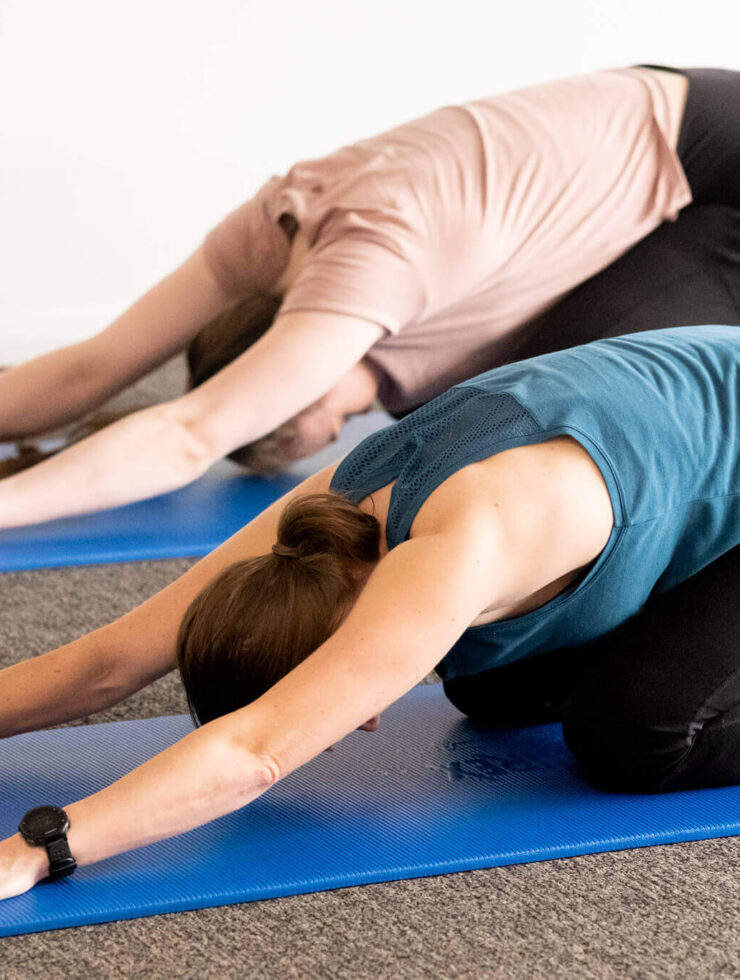During pregnancy, there is an increase in pressure through the pelvic floor muscles due to the increase in mass as the baby grows. Other factors that can increase the load on the pelvic floor during pregnancy include heavy lifting, incorrect exercise technique, constipation, poor posture when emptying bladder/bowel, chronic cough and loaded abdominal exercises.
Research has shown that doing pelvic floor exercises during pregnancy means that they will recover faster after birth. Pelvic floor exercises will also help reduce your risk of bladder and bowel control problems during and after pregnancy.
Although the pelvic floor muscles are hidden from view, they can be consciously controlled and therefore trained much like the leg or abdominal muscles. However, because the pelvic floor muscles are hidden from view, it can be hard to identify whether or not you are activating them properly. Seeking an assessment from a Women’s Health Physio can give you vital feedback, either using real-time ultrasound or through doing an internal assessment, to make sure that you are contracting the correct muscles. If you are not activating the muscles correctly, it can actually be detrimental to your pelvic floor over time. Therefore, even if you do not experience any symptoms of pelvic floor weakness, it is a good idea to seek an assessment whilst pregnant to check that you are aware of how to activate your pelvic floor muscles correctly.
How do I know if I have a problem?
Signs you may have a bladder or bowel control problem include:
- Leaking urine when you cough, sneeze, lift, laugh or exercise
- Feeling an urgent need to empty your bladder or bowel
- Leaking a solid or liquid bowel motion on the way to or after you have been to the toilet
- Finding it hard to empty your bowel unless you change position
- Feeling a lump or dragging sensation in your vagina (especially at the end of the day)
If you notice any of these issues, it is important to either speak to your Dr or seek an assessment with a Women’s Health Specialist Physiotherapist. They can do a further assessment to check the function of your pelvic floor and offer specific feedback about ways to improve its function.
Otherwise, throughout your pregnancy, there are things you can do to take care of your pelvic floor.
Things to avoid:
- Heavy weights
- Bouncing/jumping
- Sit ups/curl ups
- Exercises that require you to hold your breath
- High impact or jerky movements
- Wide legged squats or lunges
- Exercises that involve standing on one leg for an extended period of time
Try these exercises instead:
- Walking
- Low impact aerobics/aqua aerobics
- Cycling on stationary bike
- Swimming (not breastroke)
- Light weight training
- Pilates under the guidance of a physiotherapist
Making sure that you take care of your pelvic floor during pregnancy, even if you don’t have any issues, can make a big difference afterwards! If you have any further questions or concerns it is best to speak to your doctor or women’s health physiotherapist.




